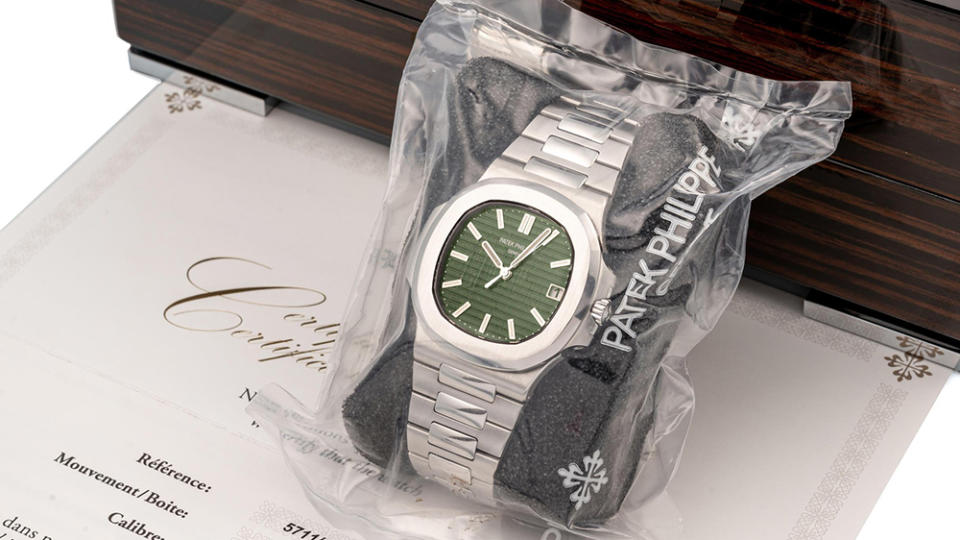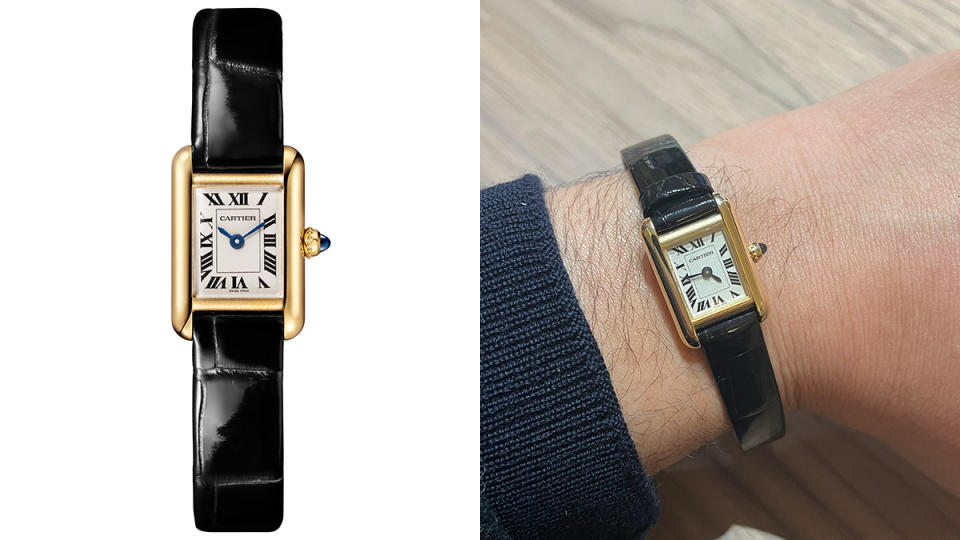How the Rise and Fall of Patek Philippe’s Nautilus Reflects the Horological Tumult of 2024

It’s been a tumultuous year for watches, and a dramatic one for Patek Philippe. I revere Patek’s history (the reference 1518 from the 1940s is a masterpiece), have written that 2022’s Calatrava 5226g is the greatest watch of the 21st century, and had my mind blown after spending a day wearing an unpolished 1978 Nautilus 3700. Because I admire a wide variety of Patek’s watches so much, I often find the focus on the steel Nautilus, Aquanaut, and now the Cubitus, too narrow. Patek’s past, present, and future are so much broader than its steel sports watches—a point I made at length in another essay earlier this year, and which Patek has also made in refreshed ad campaigns pushing diverse collections. So it is with some relief that I read the recent data report from Everywatch showing values for the steel Nautilus 5711 dropping back down to Earth. When I saw middling auction results for various Nautilus references at Phillips last week, it was as if a window opened again onto the broader story of Patek Phillipe’s horological accomplishments.

It may sound counterintuitive to suggest that falling prices are a good thing for a brand, but in Patek’s case it almost seems inevitable, given efforts by the brand to steer its catalog in new directions.
More from Robb Report
Patrick Mahomes Just Gave His Teammates Rolexes, Lucchese Boots, and More for Christmas
Tom Brady's Rare Rolex 'Paul Newman' Daytona Raked in Over $1 Million at Auction
Speaking of new directions, there’s been a lot of controversy since the Cubitus came along in October, and yet by November, one sold second-hand for double the retail price. I considered the Cubitus from a designer’s perspective, looking solely at the watch while side-stepping the gossipy pop-cultural baggage accompanying the turbulent release. There was quite a lot of that, unfortunately.
However, all of this noise around the Cubitus—a watch that even Thierry Stern, head of Patek, admits is very similar to the Nautilus—is the foreground of a longer story.

The Rise of the Patek Philippe Nautilus
Much of 2024’s controversy started with the rise of the Patek Philippe Nautilus 5711 over roughly the past seven years—including Patek dropping a limited Tiffany-dial version that shot through elite hands like hot potatoes and soon followed, shockingly, by the discontinuing of the reference in 2021. For a few years, it seemed as if there was always some dramatic headline about the Nautilus.
By tracking data for the Nautilus, we can see the contours of the roller coaster ride (not only for Patek Philippe but also for watches more generally over the past several years).
Designed by Gerald Genta as a reaction to Audemars Piguet’s Royal Oak, the Nautilus 3700 came out in 1976 and was, by all accounts, not popular. Early examples of the 3700 are rare, especially the first-generation 3700/1A. For decades, the Nautilus held a relatively marginal position in the Patek catalog, while the grand complications, complications, chronographs, and even the simple Calatrava remained the watches Patek Philippe was known for.

That changed notably sometime around 2017 when a sudden rise in interest for the Audemars Piguet Royal Oak and other ‘70s watches with integrated bracelets took hold of the global watch community, driving prices for these watches skyward, suddenly putting the steel Nautilus reference 5711—which debuted in 2006—on the short-list of must-haves. The booming interest in what is often clumsily called “a steel integrated-bracelet watch” started around Audemars Piguet’s Royal Oak, so the Nautilus caught momentum a little behind the RO right around mid-2018. By the time the pandemic bubble was about to burst, the prices for the steel 5711—if you could find one—were always well above six figures.

The Fall of the Patek Philippe Nautilus
Everywatch, the online database that tracks millions of watches dating back to the 1980s, recently issued a report on the steel Nautilus 5711 that shows its meteoric rise to a peak value in 2022 and its steady fall since. While the absolute value change since 2008 is a whopping 297.14 percent, according to the report, the 5711 has been steeply declining in value since peaking two years ago.
It’s a fascinating story because in 2021, as its popularity was cresting, Stern discontinued the Nautilus 5711. I’ve written at length elsewhere that this was Patek Philippe trying to avoid what I call “the Royal Oak problem”—namely, becoming a one-hit wonder. Earlier this year, Patek pushed ideas about diverse collections in a fresh ad campaign, launched a lovely Ellipse in April during Watches & Wonders, further diversified and “sportified” the Calatrava line, all while downplaying the Nautilus and its cousin, the Aquanaut, both of which remained nearly impossible to get at retail.
Then we got the Cubitus, around which there remains little consensus, both as a watch and as a direction taken by what is arguably the most storied watchmaker in the world.
The Tumult of the Post-Pandemic Watch Scene
There is little question that the pandemic made a horological mountain out of what was otherwise likely going to be a molehill. The impact of pandemic collectors and crypto-bros on the watch scene—especially trendy watches like the Nautilus 5711—is a phenomenon backed by data from auction results and sales reports over this year and last. So great has been the effect of the pandemic on the watch scene that it is fair to say nothing like it has happened since the postmodern mechanical revival of the 1980s and 1990s (boom) and before that, the so-called quartz crisis of the 1970s (bust).
Having thought through all of this, it was with a curious eye that I followed the fate of the Nautilus at the recent auctions held by Phillips in New York. Without boring you too much with the minutia, there were a few examples that serve, I think, as bellwethers of where watches stand in 2024.

First, there was a Nautilus reference 3700/1A from 1977—a watch that was pretty much unobtainable a few years ago—that sold for $82,550, squarely in the middle of its estimated zone of $50,000 to $100,000. This price is telling. For example, upon seeing the same watch in Copenhagen in 2022, the assumption was that it would sell for north of a quarter-million dollars.
Meanwhile, a rare solid gold 3700/11 went for $190,500, failing to reach its high estimate of $200,000.
A 2012 Nautilus 5711A, which sports a white dial, sold for $82,550, below the current median price of $93,558 that Everywatch reports for this model. Its median price in 2020 was $137,527.
A solid-gold Nautilus Travel-Time, a chunky reference 5990 with a Tiffany co-signature known to drive prices way up, went for $304,800; its high estimate was $400,000. This kind of result was unheard of just a couple of years ago.

Perhaps most telling was that the platinum 5711/1P, still in its plastic factory seal, barely crested over its $800,000 high estimate to bring in a somewhat unimpressive $825,500.
Some call this a correction, but for me, it feels more like the end of a crazy roller coaster ride, the wind still blowing my proverbial hair back, the adrenaline still coursing, the inevitable comedown of standing on level ground perhaps imminent, but a ways off.
A Most Confusing Year
So, what does the rise and fall of the Patek Philippe Nautilus tell us about the world of watches during 2024? From where I sit, this has been a year of uncertainty. The prices of the Nautilus tell us of economic uncertainty, but I can’t help but wonder if its rise and fall also reflects a scattering of tastes. The past few years have seen watch sizes fall, tiny Cartier Tanks steal headlines, the return of classically sized dress watches, and the rise of dressy watches with stone dials. Even prices for Rolex sport models dropped precipitously this year, and now a glut of pre-owned models competes with Rolex’s new Certified Pre-Owned program.
Speaking of things closer to home, collector friends of mine are considering 32 mm dress watches, and these are people who not long ago wondered if a 36 mm Rolex Datejust was too small for them. My own interests as a collector shifted back to Rolex sport watches precisely because the prices have fallen, this my attempt to take advantage of slacking prices for these off-trend neo-vintage pieces.

Furthering the tumult of 2024, I would argue that the category of neo-vintage watches came into its own this year, with sellers pushing and collectors coveting watches from the 1980s and ‘90s. This year, Phillips even threw an auction dedicated to watches from those decades, the first of its kind. Sellers like Analog Shift now have dedicated a “neo-vintage’ submenu on their website. The rise of neo-vintage is partly a product of these watches aging toward vintage status, but it’s also a kind of reckoning of tastes toward the often quirky, design-forward watches that epitomize the postmodern, free-for-all styles of that era.
Perhaps, in the end, the rise and fall of the Nautilus and the controversial release of the Cubitus tell a story of Patek Philippe’s undeniably high status. We can, to some degree, see the world of watches—and, perhaps, the world itself—reflected in the topsy-turvy world of Patek. This is similar to how we can see the world reflected in popular culture more generally, from films to art, music, and so on. Perhaps the tumultuous world of watches during 2024 reflects what has been a wildly tumultuous year more broadly in every way. That’s certainly been true here in the U.S. and seemingly more so worldwide. “May you live in interesting times” is an underhanded curse I wouldn’t cast on anyone. Here’s hoping for far less interesting times in 2025 for watches and beyond.
Best of Robb Report
Sign up for RobbReports's Newsletter. For the latest news, follow us on Facebook, Twitter, and Instagram.


